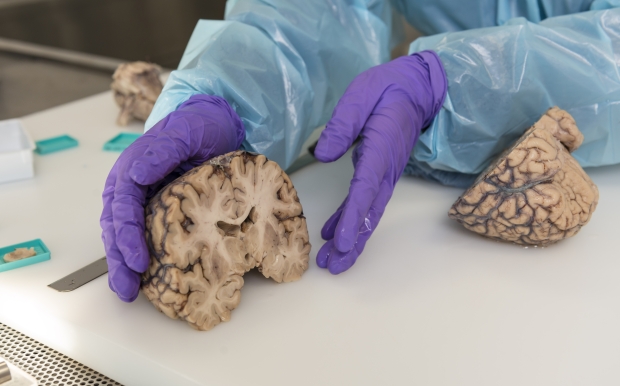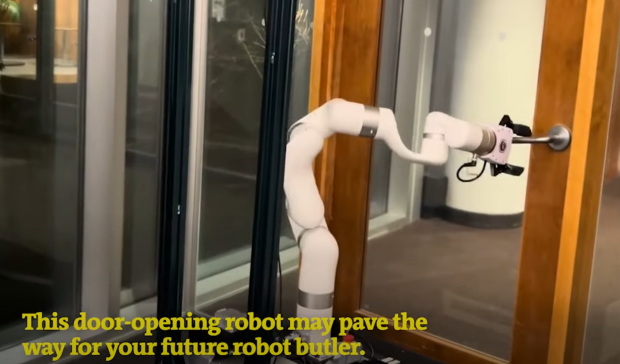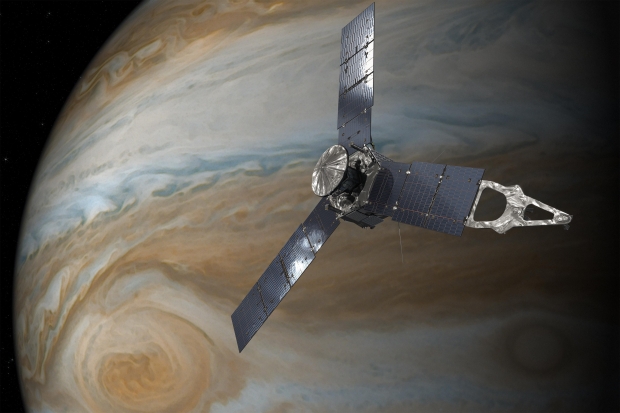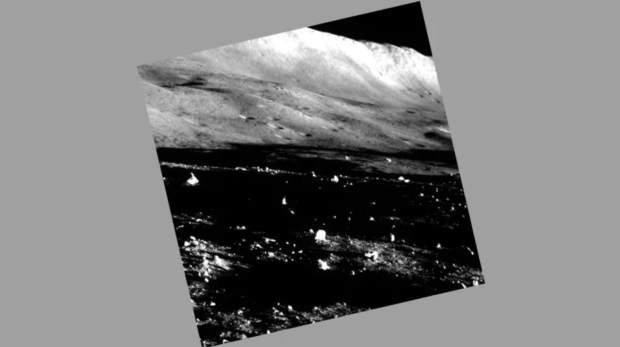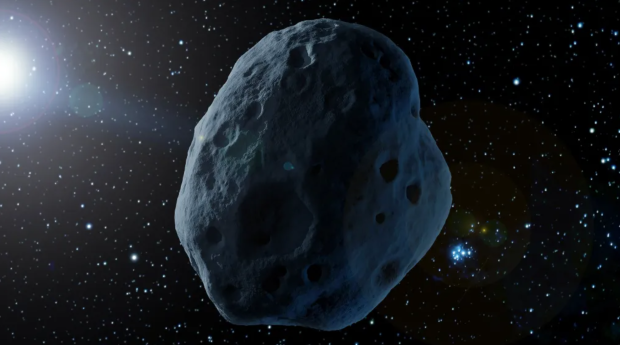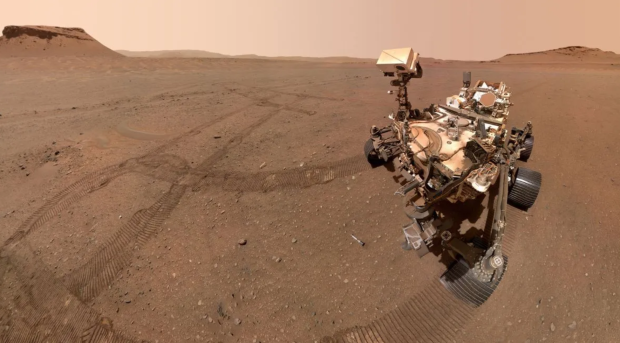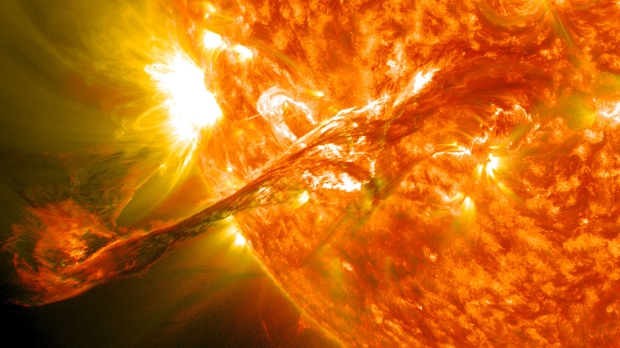Science, Space, Health & Robotics News - Page 12
Scientists achieve world's first by 3D printing functional human brain tissue
Scientists at the University of Wisconsin-Madison are claiming to have created the first 3D-printed functional human brain tissue.
The researchers published a new study in the scientific journal Cell Stem Cell, and according to the paper, the team created the 3D-printed brain tissue using horizontal layers of "bio-ink" gel. According to the team, the tissue is soft enough to enable neurons to grow through it, yet it is hard enough to keep its structure.
This duality has resulted in the tissue being able to grow cell networks similar to a real human brain, and according to the team, the 3D-printed brain tissue has some advantages over "mini-brain" models that are commonly used to study a human brain.
Wheeled robot set loose on college campus teaches itself to open any door
Engineers have set loose a wheeled robot that's designed to teach itself how to open doors, demonstrating a step forward in machines interacting with the physical world.
The creators behind the wheeled robot trained it through imitation, showing the machine visual examples of how to open different types of doors. The robot was shown visual examples of how to open doors, cabinets, drawers, and even refrigerators. After each visual demonstration, the robot then spent anywhere between 30 minutes and an hour learning how to open each door.
After it was successfully trained, it was then set loose on a college campus where it would encounter different types of doors. The creators trained the robot on 12 objects for practice and then an additional 8 objects. Notably, the robot had a success rate of about 50% when it first started, but after many attempts, its success rate increased to about 95%.
NASA releases stunning photographs of a 'tortured moon' within our solar system
The most volcanically active world in the entire solar system has recently been imaged by NASA's Juno spacecraft during a close fly-by.
That world is none other than Jupiter's moon, Io, and during a close fly-by, the Juno spacecraft captured the volcanically active body at a distance of just 930 miles. Notably, Io is a "tortured moon" as it's constantly engaged in a gravitational tug of war between Jupiter and the two neighboring moons, Europa and Ganymede. The result of being stuck in the middle is friction across the entire world, and when you have friction, you get heat.
The surface of Io is scorched by this intense heat that is further exacerbated by extreme volcanic activity, with recent estimates pointing to more than 400 active volcanoes littered across the surface of the moon. NASA's Juno spacecraft managed to capture some of the plumes of gas erupting into space from these volcanoes. Furthermore, Io's volcanoes aren't like the volcanoes here on Earth; they are much larger - in fact, Io's largest volcano, Loki Patera, is approximately twice the size of Earth's largest volcano, Mauna Loa.
Lunar lander snaps eerie photo of an oncoming lunar night before its long sleep
Japan's lunar lander landed on the lunar surface with extreme precision and regained power after a full nine days.
Upon landing, JAXA announced the Smart Lander for Investigating Moon (SLIM) nearly tipped upside down, and now reports indicate the SLIM lander is going dormant while it endures the long lunar night. According to JAXA the SLIM lander has captured an eerie photograph of the impending lunar night, which it might not even wake up from.
The photograph showcases the Shioli crater right before dusk, and according to reports, the lunar night lasts for two Earth weeks, and temperatures reach below -200 degrees Fahrenheit. Notably, the SLIM lander is solar-powered, and according to JAXA, it wasn't designed to withstand the long duration of the lunar night.
Scientists discover building blocks of life within asteroid sample
The building blocks of life have been discovered within asteroid samples recovered by Japan's Hayabusa2 mission that returned to Earth back in 2020.
The Hayabusa2 mission involved a lengthy trip to the asteroid known as Ryugu, a near-Earth asteroid that is nearly 3,000 feet wide and was originally discovered in 1999. JAXA, Japan's version of NASA, sent a spacecraft to collect samples of the asteroid, and since those samples arrived back on Earth, they have undergone analysis by multiple researchers and scientists.
Now, a team of researchers has discovered evidence the samples contain organic matter, providing further weight to the theory asteroids were the transportation system of organic molecules to planets such as Earth. The team behind the study explained that since Ryugu has no atmosphere, it's prone to enduring micrometeoroid impacts that change the surface composition and the minerals within the asteroid.
Continue reading: Scientists discover building blocks of life within asteroid sample (full post)
HPE Spaceborne Computer-2 with over 130 TB of KIOXIA SSD storage sent to the ISS
Last week, we reported on the HPE Spaceborne Computer-2 making its way to the International Space Station, hitching a ride on a SpaceX Falcon 9 rocket and mission. Having the computing power of a data center in orbit is an invaluable tool for space-age information processing, research, and scientific experiments, and sitting at the heart of the HPE Spaceborne Computer-2, you've got the latest in KIOXIA SSD storage-130 TB (terabytes) in total.
Supercomputers and SSDs in space, and all with off-the-shelf technology readily available on Earth. Breaking down the 130 TBs of storage, you've got eight 1GB NVMe SSDs and four value 960GB SSDs. Throw in four enterprise SAS SSDs, each with 30.72 terabytes, and you've now got 130 TBs of storage floating in space. It's the most data
storage to travel to the space station on a single mission.
Scientists say there's a chance NASA's rover has found life on Mars
NASA's Perseverance rover landed in the Jezero Crater in February 2021, and since then, it has been collecting sediment samples, some of which may contain proof of past microbial life.
A new study published in Science Advances details a geological survey of the Jezero Crater in which researchers used radar instruments attached to Perseverance to penetrate the ground to collect data on what is beneath the rover's wheels. The new study found the 4 billion-year-old crater that was created through an asteroid impact was later filled with younger sediment and rocks.
Notably, these younger sediments and rock could have been carried down into the crater through multiple river systems, which coincides with researchers' previous strong suggestion that the Jezero Crater once contained deltas fed by an ancient river system. These suggestions were why Perseverance was sent to investigate the Jezero Crater. Now, scientists have found horizontal layers of underground sediment that resemble a lake on Earth.
Continue reading: Scientists say there's a chance NASA's rover has found life on Mars (full post)
Gigantic solar eruption captured blasting into space in stunning 4K video
Miguel Claro, a professional photographer, has captured some stunning footage of a large solar prominence occurring on our host star, the Sun.
The professional photographer, author, and science communicator based in Lisbon, Portugal, captured a solar prominence, or filament of plasma gaining in height, eventually snapping and resulting in a coronal mass ejection (CME).
Claro captured the stunning footage seen above on February 22, 2022, and explained in a recently published article on Space.com the prominence is so large it could likely fit dozens of Earths within it, with some prominences even being so large they can stretch thousands of miles into space.
Scientists claim they've discovered Amelia Earhart's plane wreckage
An ocean exploration company from South Carolina announced on Saturday that it has sonar images that may be evidence of famed aviator Amelia Earhart's plane wreckage.
According to reports from NPR and the Wall Street Journal, the team behind the sonar images is Deep Sea Vision, an ocean exploration company that says it made the discovery using an unmanned underwater drone paired with a 16-person crew that both scoured more than 5,200 square miles of ocean floor between Australia and Hawaii.
Notably, the team detected an airplane-shaped object on the seafloor approximately 100 miles off Howland Island, which is where Earhart and her navigator Fred Noonan were scheduled to refuel but never arrived. Reports indicate that the images do resemble Earhart's aircraft, a Lockheed Electra, in not only shape but also size and tail. The famed disappearance of the aviator happened in 1937 while she was attempting to circumnavigate the globe, which would have made her the first female pilot to have flown around the world.
Continue reading: Scientists claim they've discovered Amelia Earhart's plane wreckage (full post)
NASA telescope photographs a cosmic bridge linking two galaxies
NASA has released an incredible new Hubble Space Telescope image that showcases a cosmic bridge linking two galaxies.
The galaxy seen above is part of a galactic group called Arp 295, and what can be seen in the image is an incredible 250,000 light-year-long bridge of stars and gas that stretches between two galaxies, Arp 295a to Arp 295b. The galactic cluster imaged above is located 210 million light years from Earth and gives astronomers a peak into the future of our own Milky Way galaxy as it is anticipated that it will collide with the closest neighboring galaxy, Andromeda, in approximately 4 billion years.
So, how did this cosmic bridge form? Reports indicate that following the collision of the two Arp galaxies, they began to circle each other, with each's gravitational pull eventually drawing in the other and removing gas, dust, and stars. This process can take billions of years, and eventually, the galaxies merge, which forms an overall new shape for the now singular galaxy.
Continue reading: NASA telescope photographs a cosmic bridge linking two galaxies (full post)


